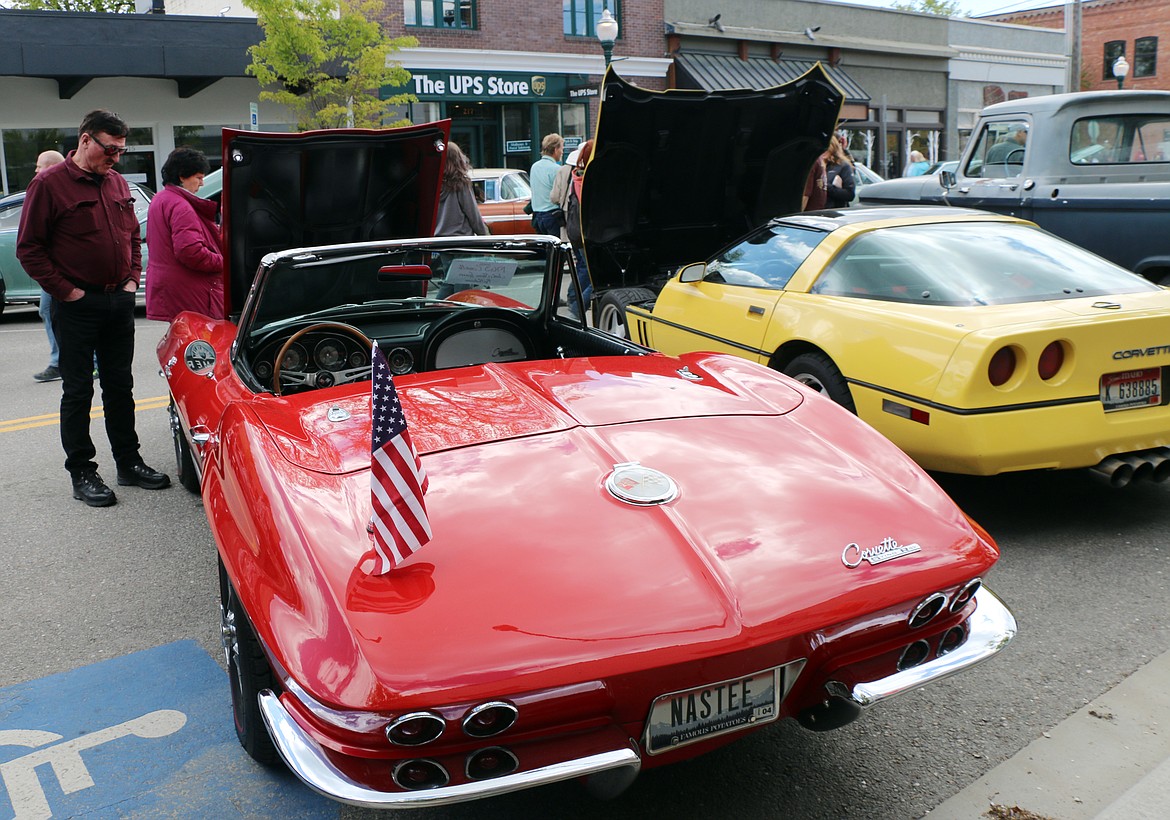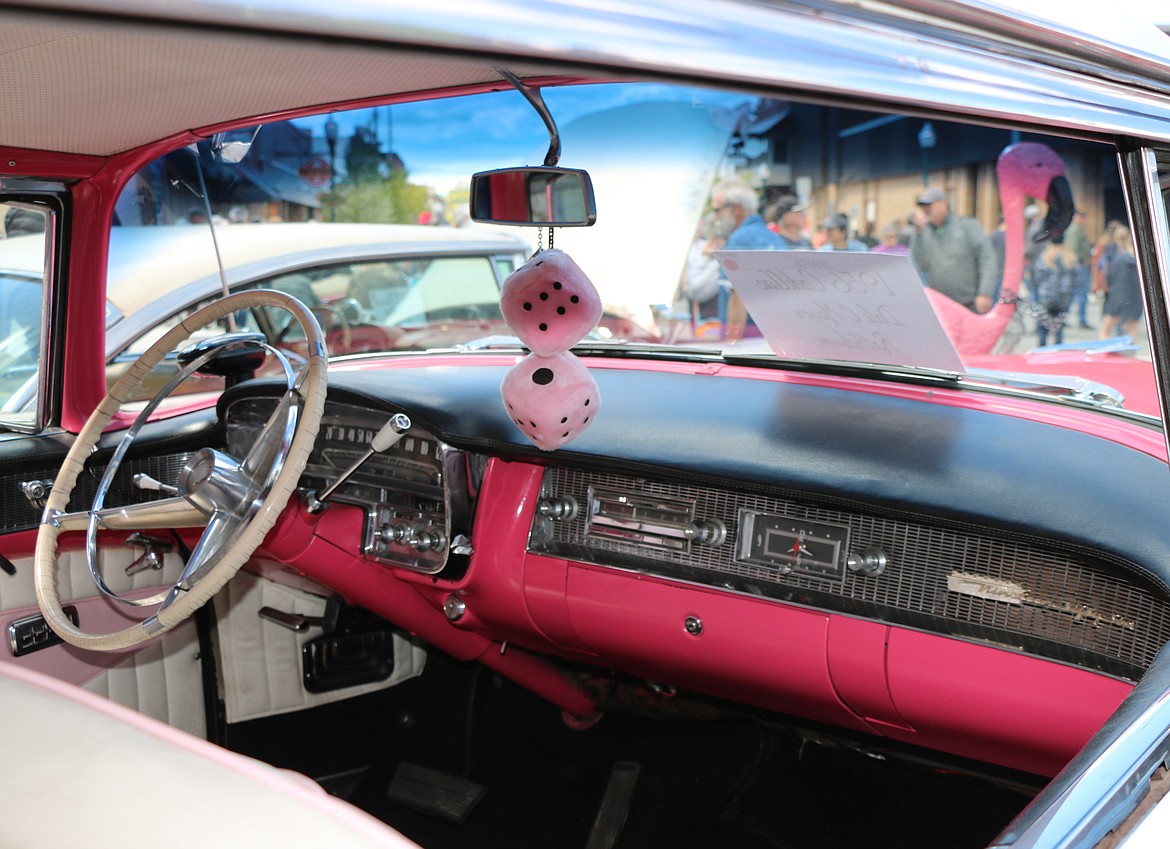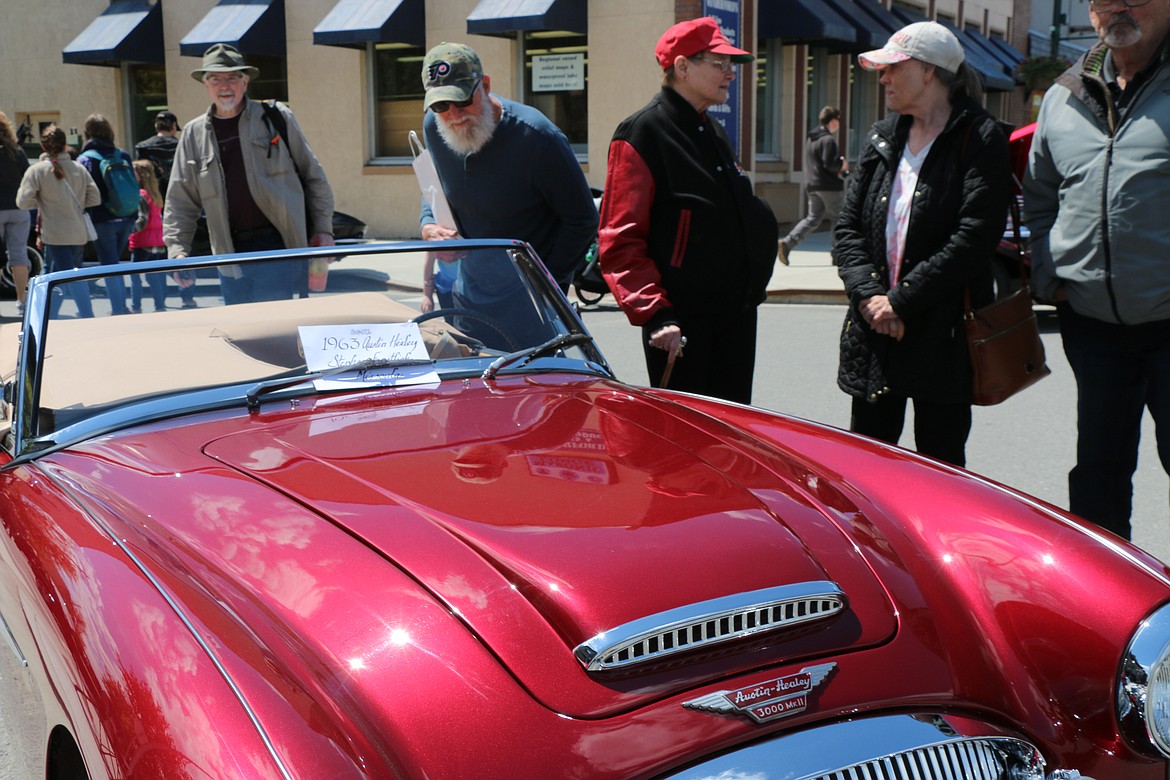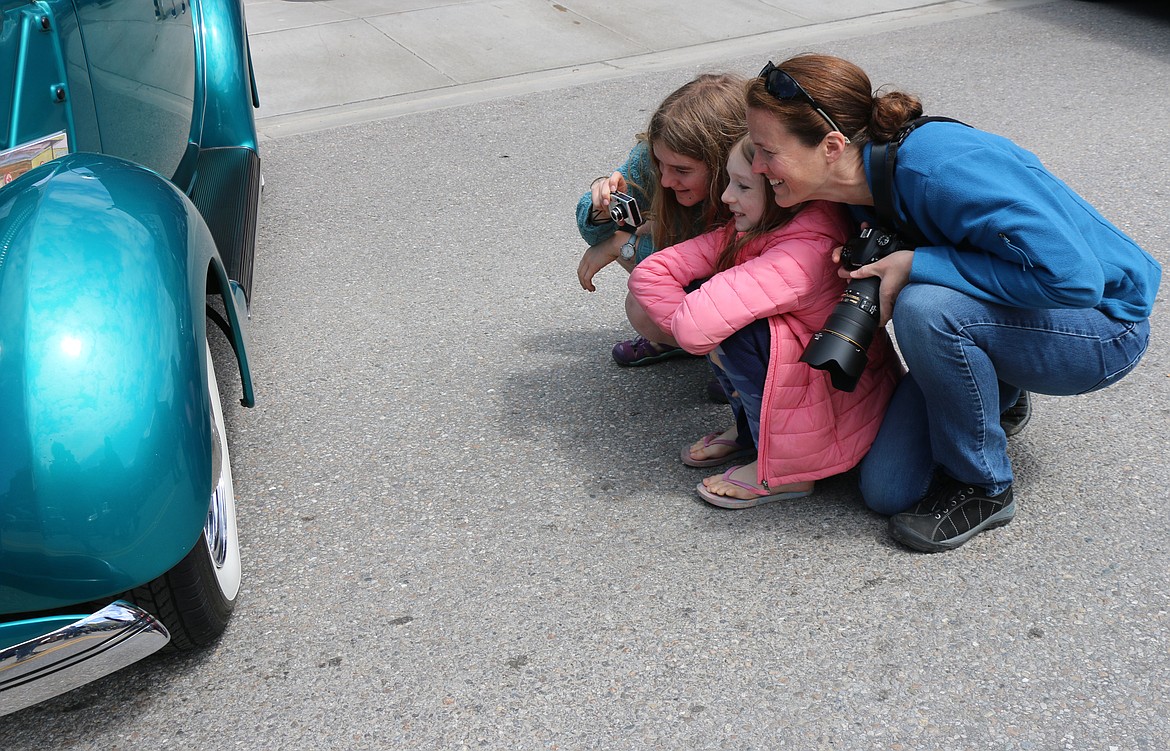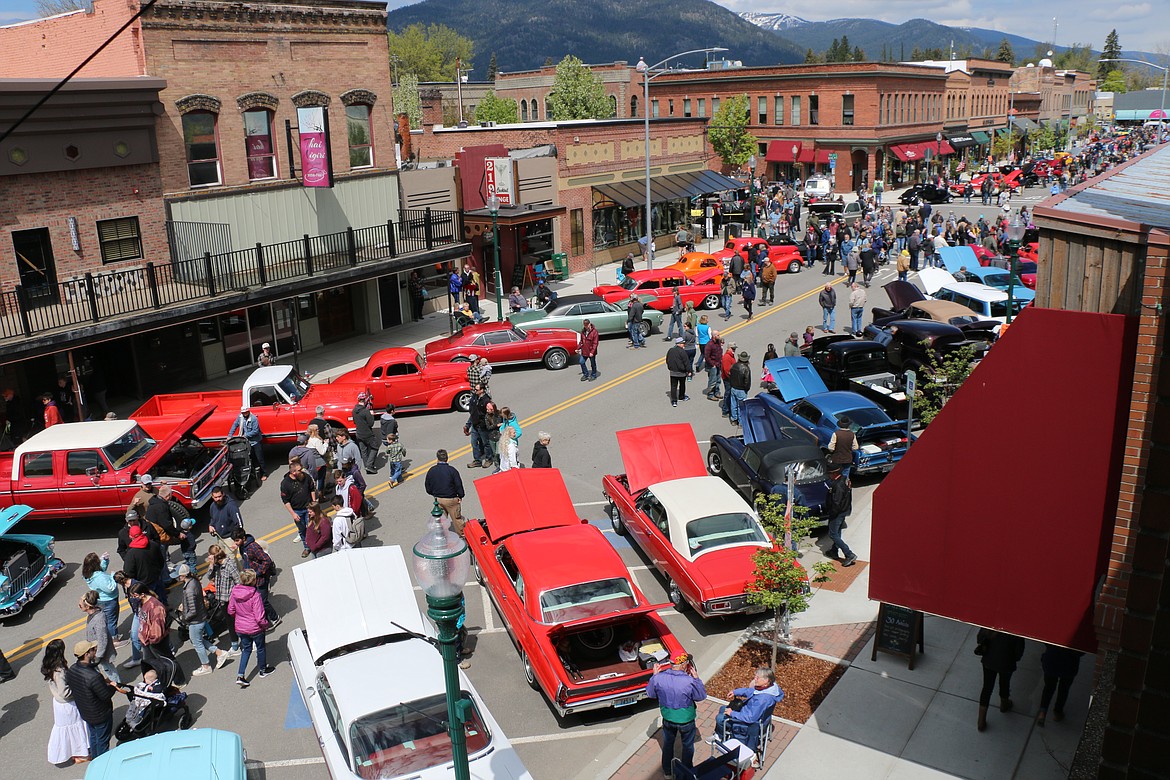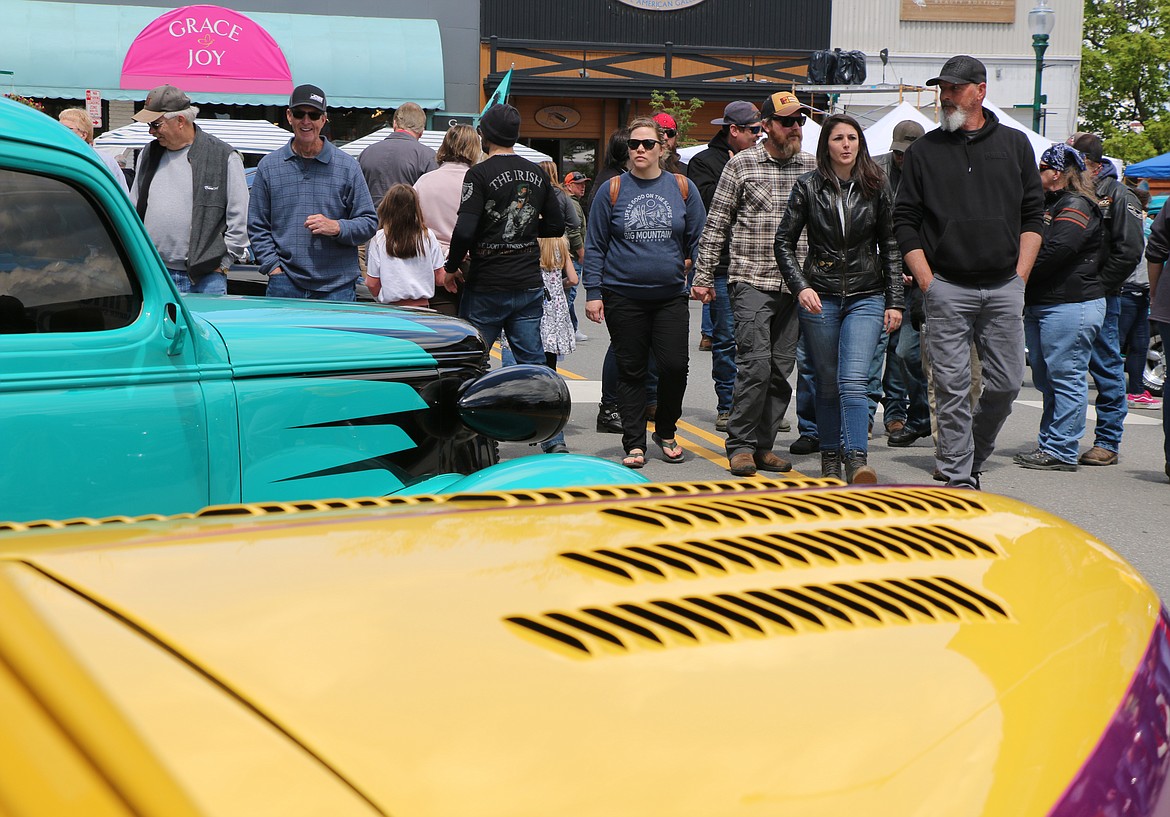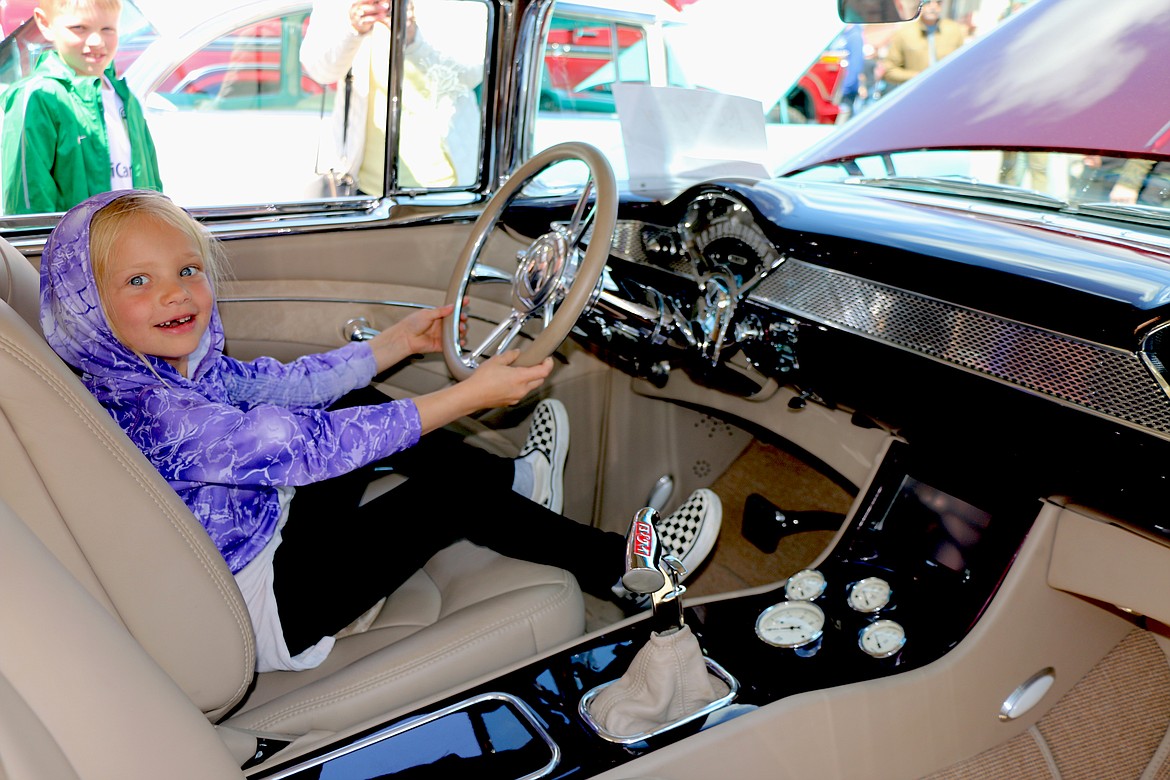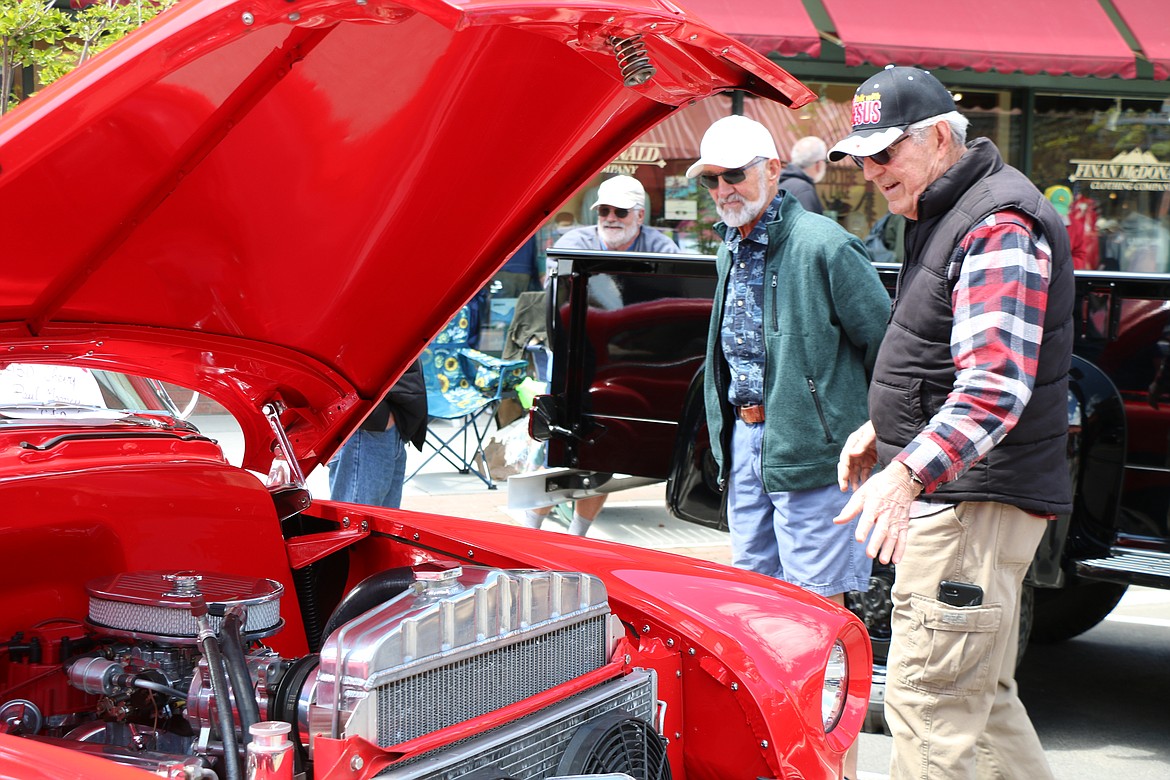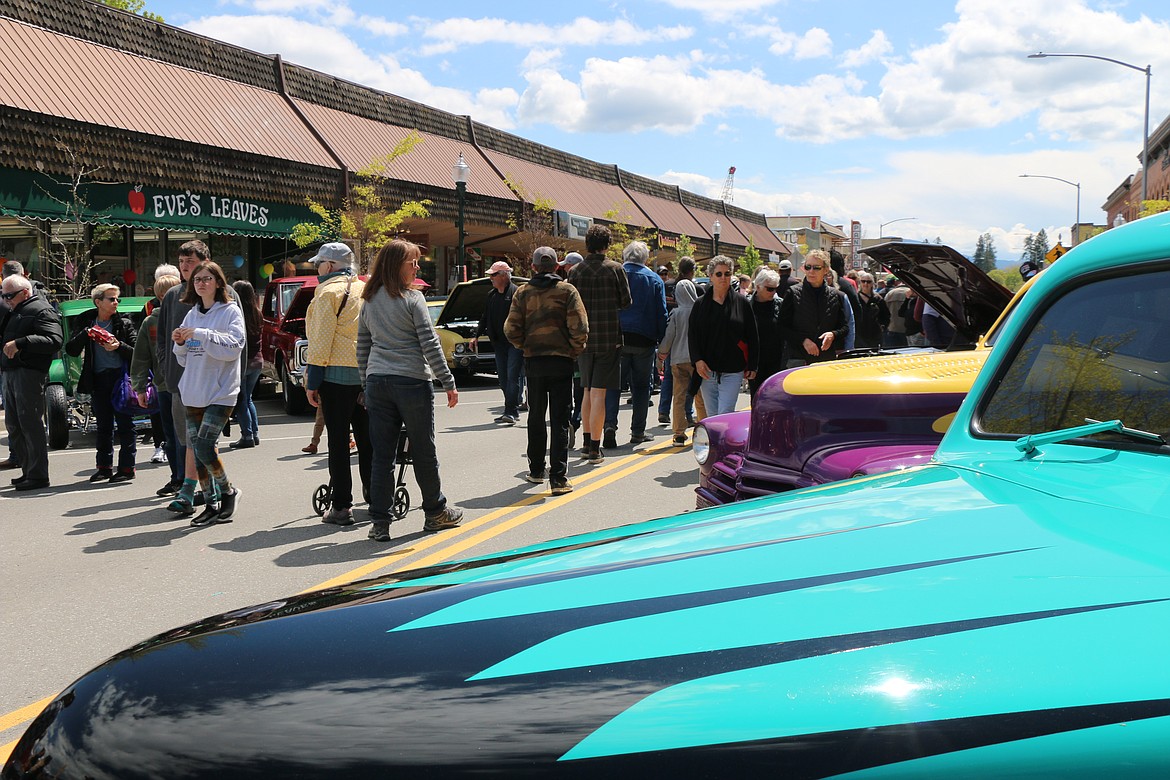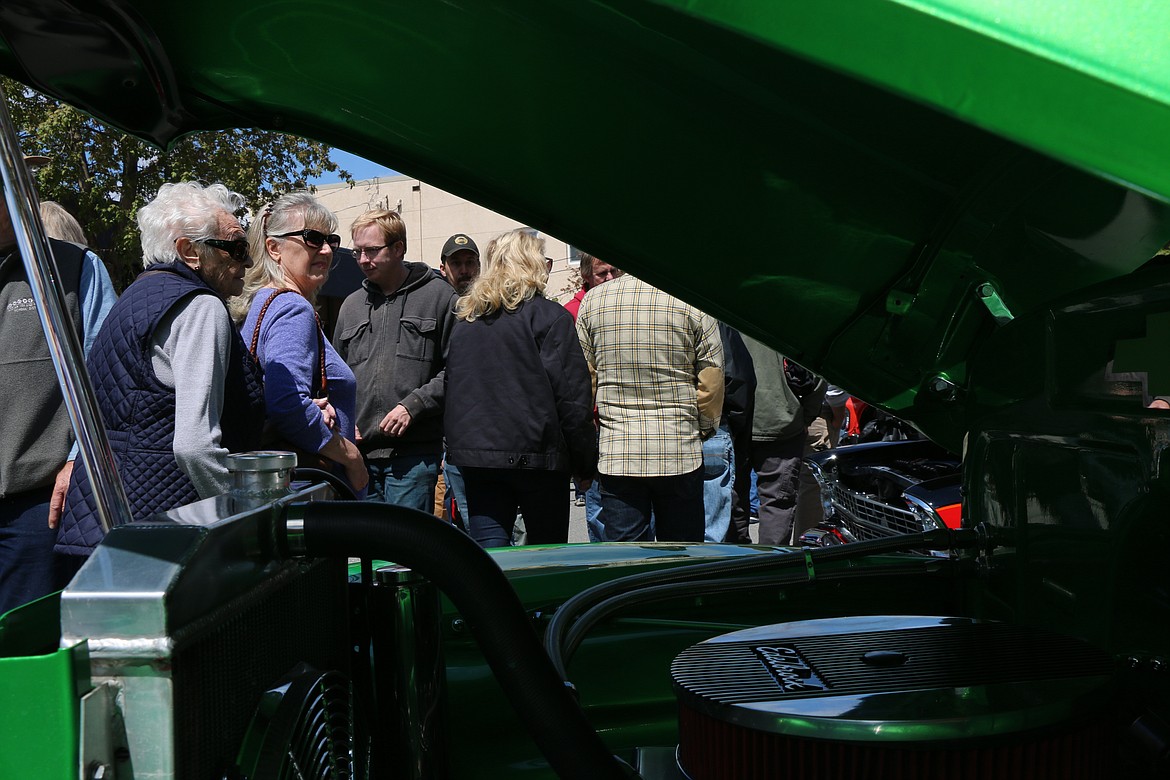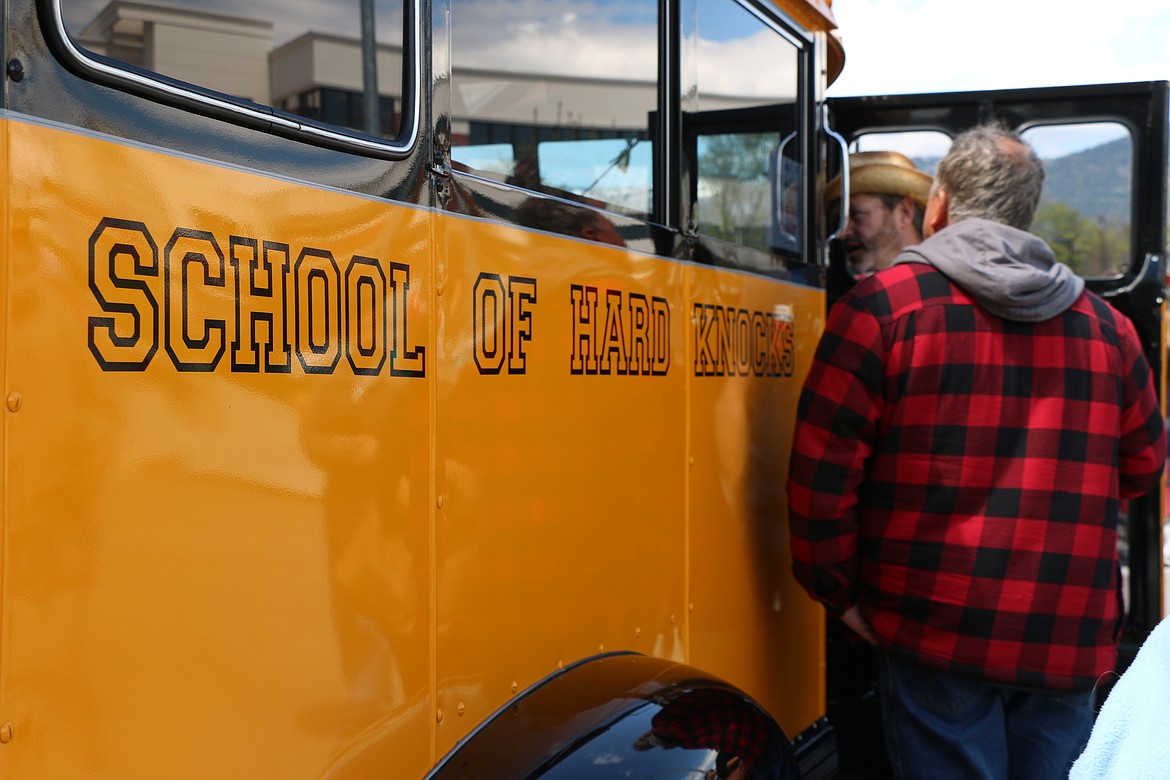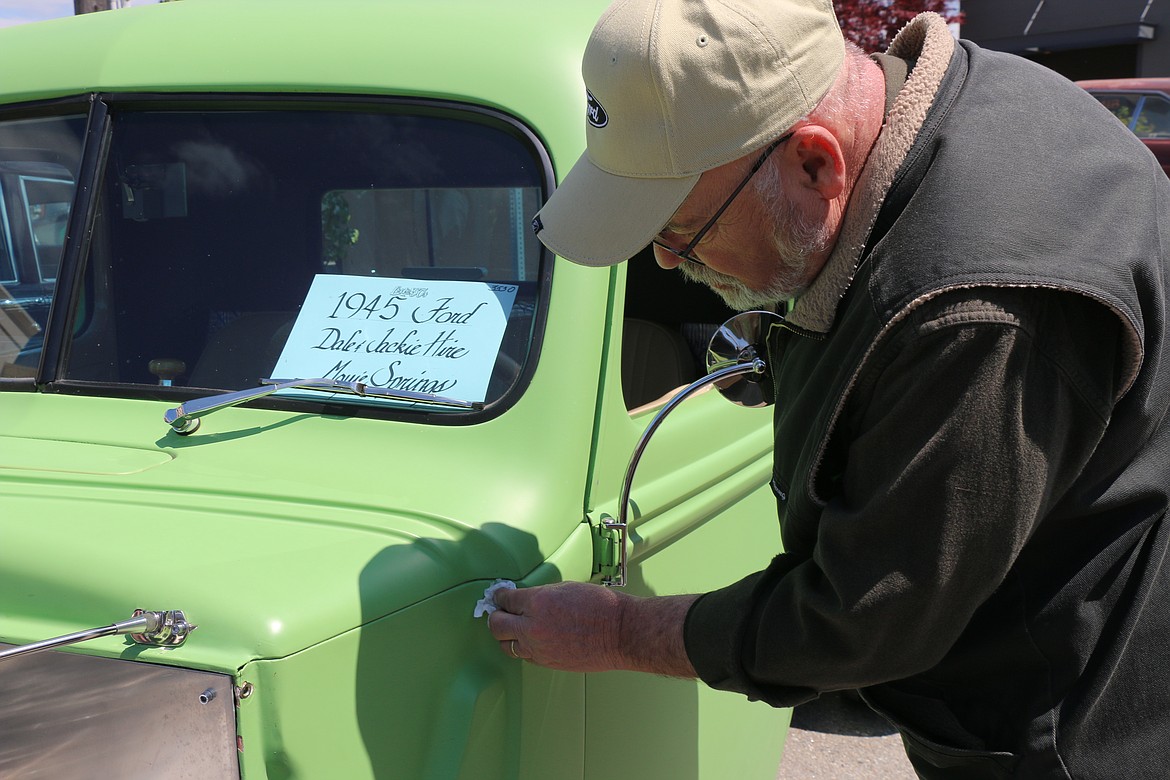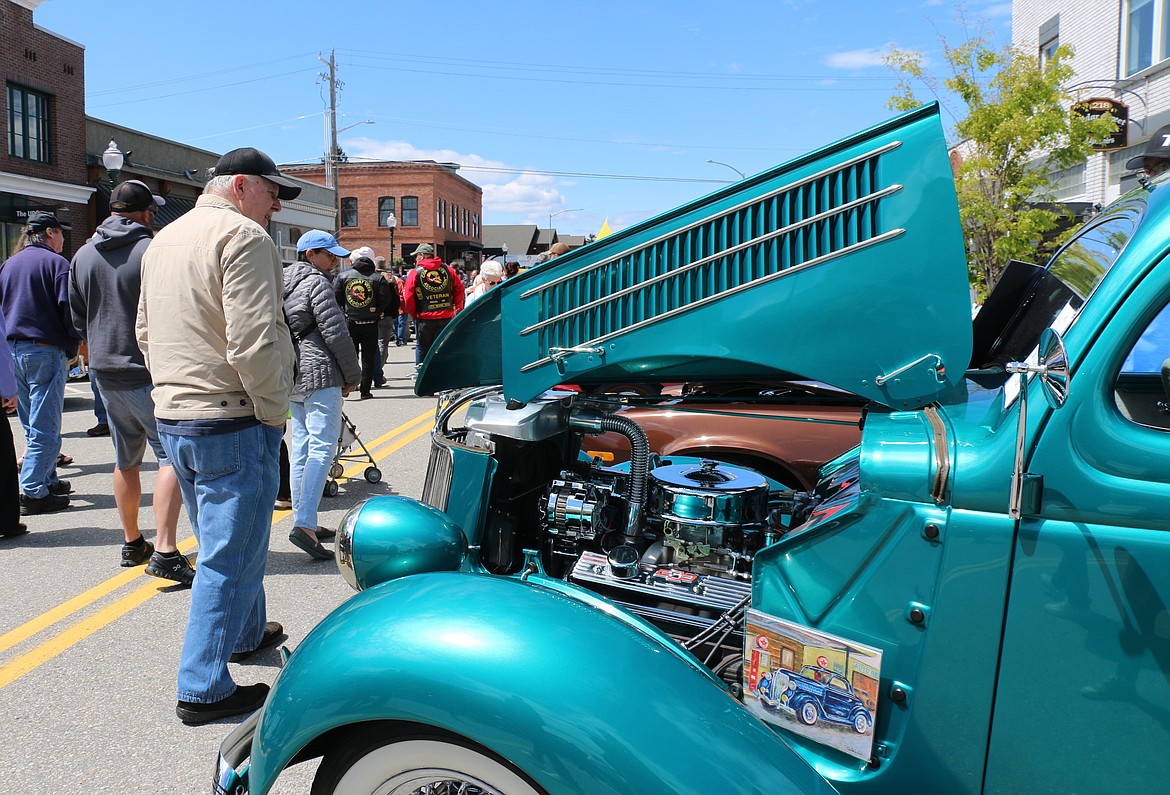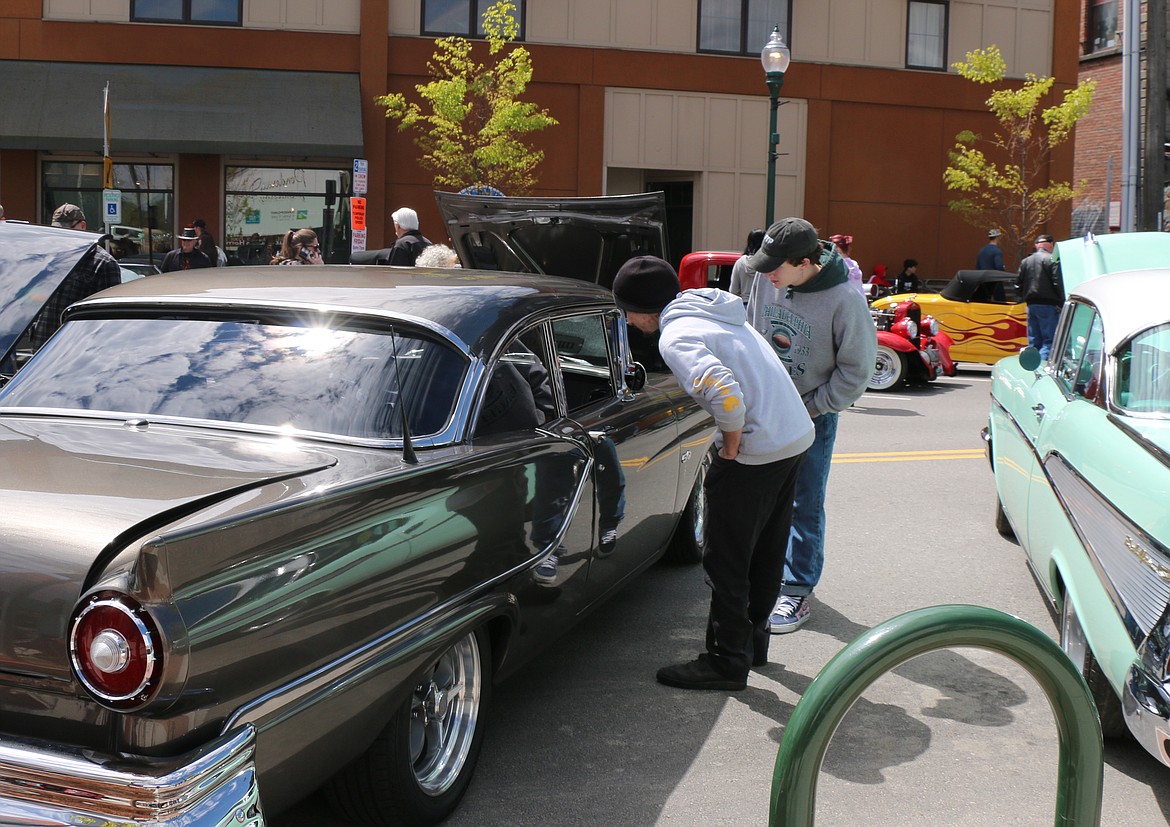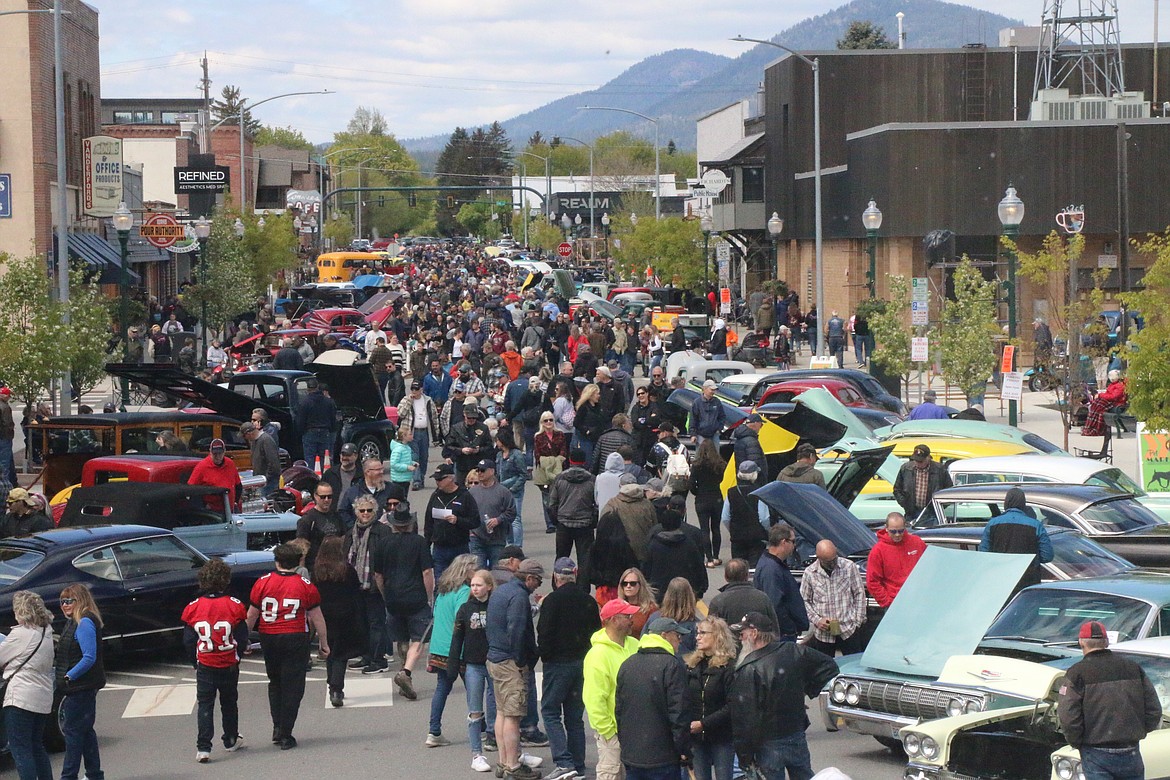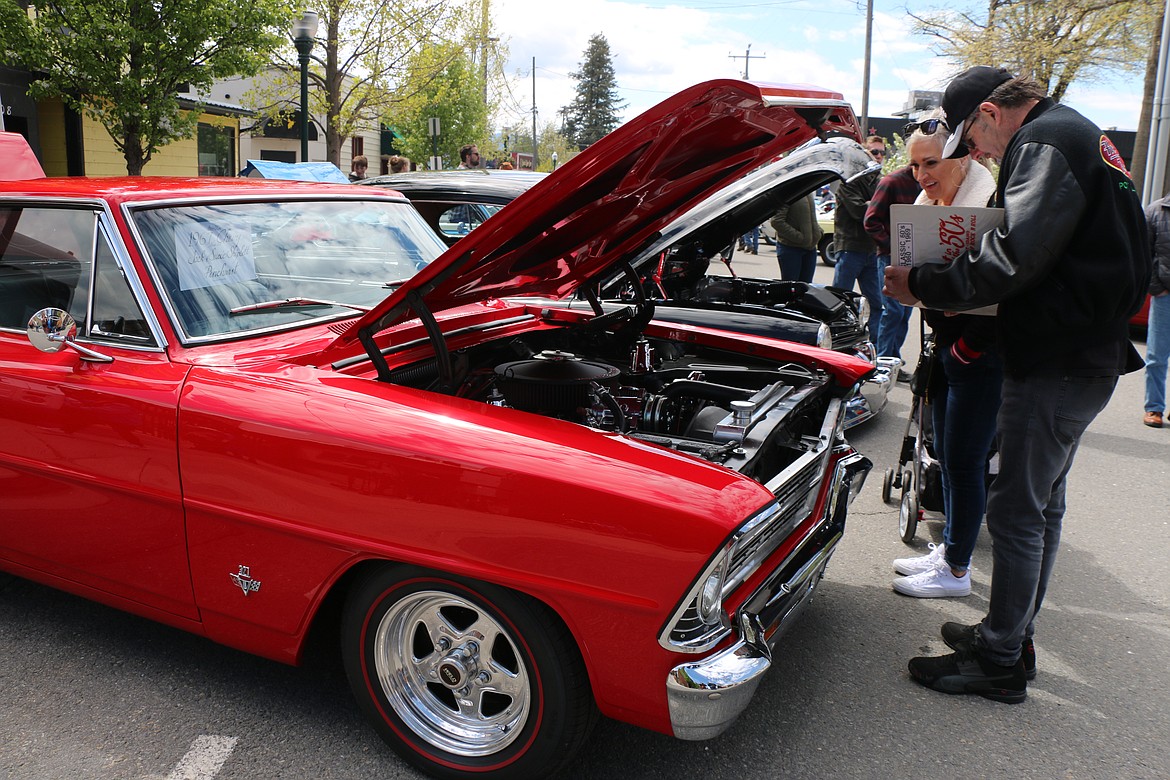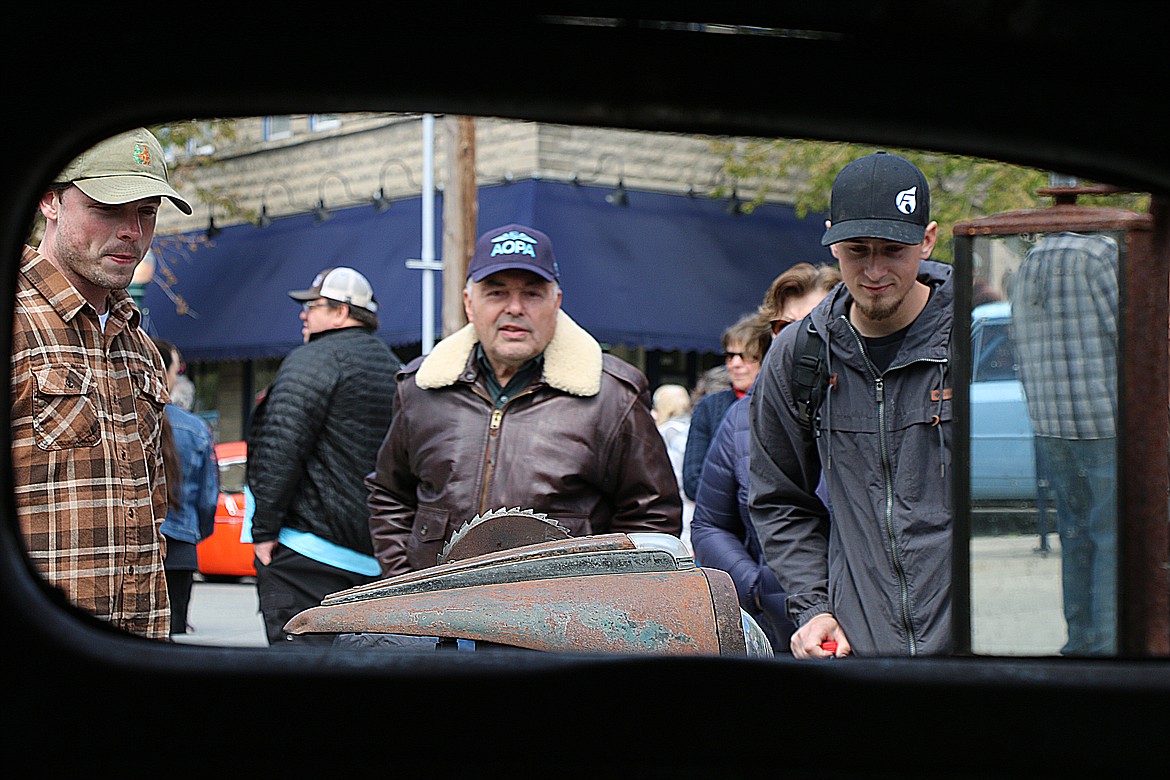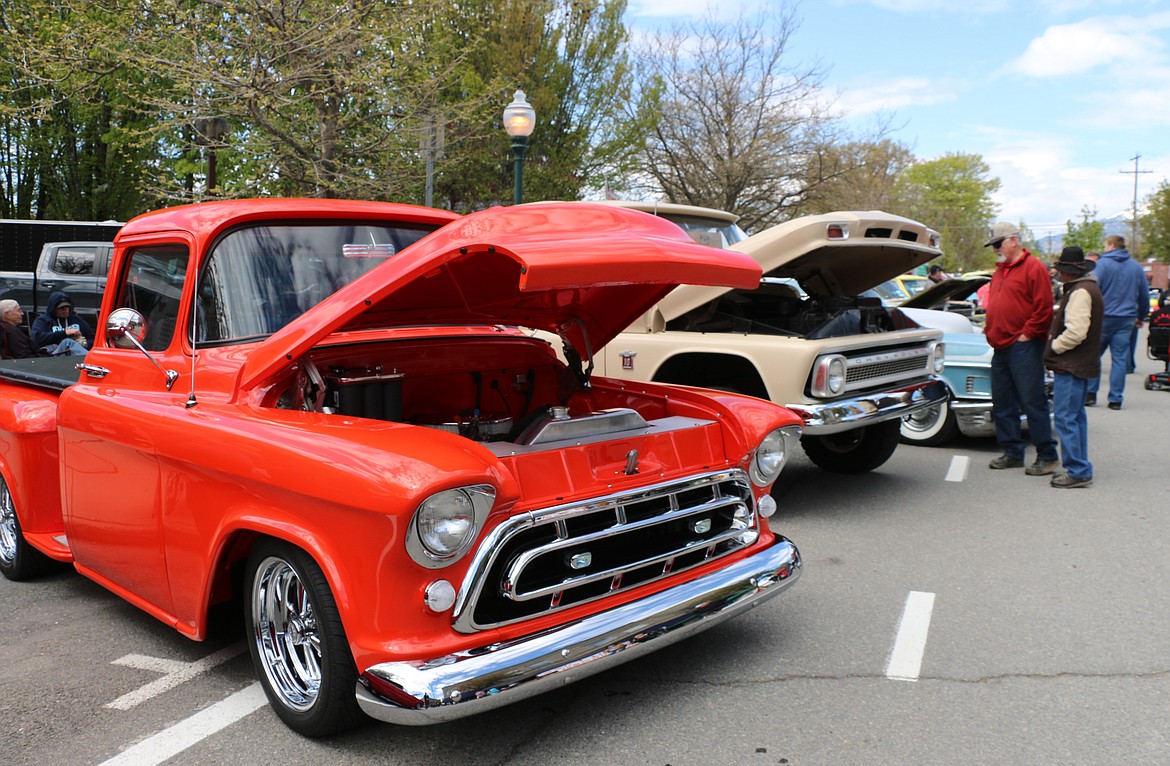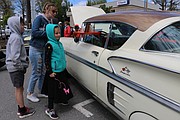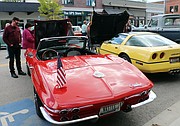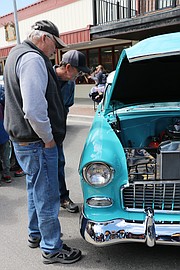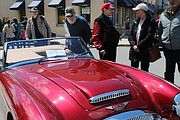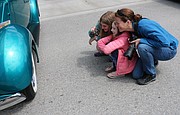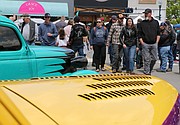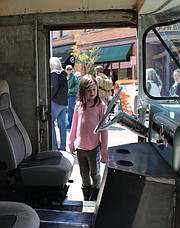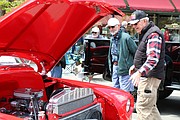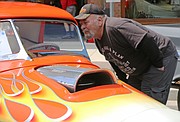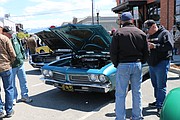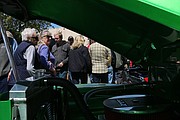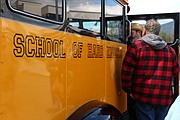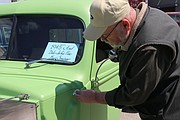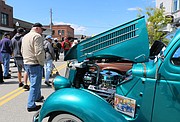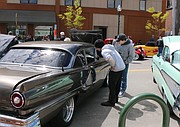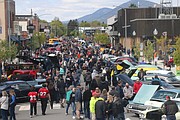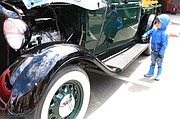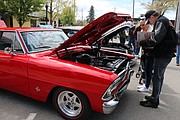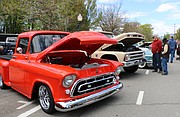Getting Lost in the '50s
SANDPOINT — Ken Bricker was 17 when he bought the 1942 Ford. He was 18 when he wrecked it.
He was headed to school in the snow; he figures it was either in January or February.
"They'd only plowed one lane," Bricker said. "I'm going stupid fast. There comes another guy, a buddy, he's stupid fast going the other way and we meet and I blinked. I ducked into the snow bank and it plowed snow for a while then it threw its butt out in front of him and wiped out that fender and that back panel."
Bricker chuckles, watches the crowd walking past his car — one of 400-500 cars at Saturday's Lost in the '50s car show — before continuing his tale.
The 1966 Sandpoint High School grad said drove the car a while longer and then, before he shipped out, he sold the engine to someone who planned to drop it into a'44. The car sat at his grandmother's place in the Sunnyside area for a while before being stored at his dad's place in Kootenai for a few more years before he towed it to his home in Portland in the mid-'70s.
"It was just kind of out of mind out of sight, out of mind during those years, right? I mean, I went on with the rest of my life," Bricker said. "I knew always wanted to do something with it but you know, you got kids, school, braces on the teeth, college."
He chuckled.
"So finally, finally the kids are gone, and we could save some money and do it."
While he worked intermittently on the car, the retired helicopter mechanic said it wasn't the last year that he was able to finish it. He always wanted, always knew, that he would bring the car home to Sandpoint for Lost in the '50s.
It is where he grew up; it is where he bought the Ford.
"I've been up here to Lost in the 50s a time or two and have been dying to bring the car back," said Bricker, who now lives in Meridian. "The last time this car was here I was towing it out. So anyway, it's been done about a year."
Being able to show the car at Lost in the '50s has been "just wonderful," Bricker said. "I just can't say enough [about how much it means].
While it was 20-some years old in the 1965 when he bought it, Bricker said the Ford was a great car — one of the things that attracted him to it.
"It had an Oldsmobile engine in it with two carburetors," he said of his reason for buying it before chuckling.
While he hasn't lived in the area since joining the Navy, Bricker still has family living in the Sandpoint area. He's made regular trips home to visit family and enjoy the occasional Lost in the '50s show.
The Ford isn't the only classic car Bricker and his wife, Susie, own. They also own a ’68 Volkswagen Beetle that his wife's dad bought new in Spokane, and a ’63-and-a-half Ford Falcon hardtop and a '41 Ford four-door sedan.
Seeing the reaction, hearing from passersby how much the cars mean to them and how much they appreciate they care and love the cars have received means a lot, Bricker said.
"It makes it all worth it," he added. "A lot of the people my age remember it because these cars were around then. They were old. … and a lot of people remember what they were like. So it's just great that people look at it and appreciate it."
Like Bricker, Jack and Sherri Learn of Rathdrum said they love sitting by their vintage Corvette Stingray roadster — one of only 16 built with the specific suspension and engineering.
The car has won a number of awards, including first and a pair of seconds at the Sandpoint show. The couple said they love the show, love the atmosphere and how the Lost in the '50s crew go out of their way to make participants feel special.
"Look around," Jack Learn said when asked what makes the Sandpoint show special. "The people are friendly. Everybody likes to see the cars [and] a lot of cars show up so they're entertaining a lot of people. It's just a lot of fun."
And with the show being showcased in the downtown, Sherri learn said there is something for everyone.
"Everyone wants to be outside. Everyone's happy," she added.
It's the couple's fourth time at the show, and each time they said they go away from Lost in the '50s having had a great time, surrounded by people who love classic cars and celebrate what makes them special.
The Learns have owned the Corvette for about 18 years, trading a 1955 Buick Century for it. It wasn't in the best of shape and Jack Learn said he spent a fair amount of time working on it and changing a lot of thing "for the better," he adds.
He's owned classic cars all his life but had never owned a Corvette and thought it was time to change that.
"It's probably the first American sports car that really is a sports car," Learn said of his desire to own a Corvette. "Ford made the Thunderbird but the Thunderbird was not a sports car, it had the stock suspension and stuff like that. The Corvette was made to be a sports car, made to be a race car."
It was at a car show somewhere when Zora Arkus-Duntov, a Belgian-born American engineer whose work earned him the nickname "Father of the Corvette" saw Learn's sign about the car's unique suspension.
"We never made that," Learn recalls Duntov, who was 85 at the time, telling him. "I said, 'Yes, you did, you made 16. So he crawled underneath the car and was under there for about 20 minutes. And he came back out and says, 'You have one of the 16.’”
Like many classic car owners, Dave Moore said he's owned vintage rides his entire life. Growing up, he loved European cars — "the horses, Triumphs and BMWs" — eventually owning all of them at some point.
However, he said he's made the transition to "old, smooth riding boats" like his 1955 Bel Air. Although, he does point out that he also owns a ’69 Camaro convertible.
While he loves them both, he's not sure either — or any of the cars he's owned throughout the years — is his favorite.
"I'm waiting for that car to come," he said before laughing and gesturing to his Bel Air. "I like this one right now. This is a '55 Bel Air and it's a good iconic car. I'm spoiled right now."
He loves the memories he associates with the car, says he remembers driving in such cars as a youth with his parents.
"Just riding in the driver's seat with your parents [and] they would let you drive in the old days," he said. "You know, you thought you were driving but they were driving, and you're hanging on the wheel. And so it's, I think, I just remember stuff like that in very similar cars."
He remembers another time when the family took a trip to Missouri in a similar car. To give the kids a chance to rest on the 2,000-mile trek, Moore said his dad built a platform in the back.



